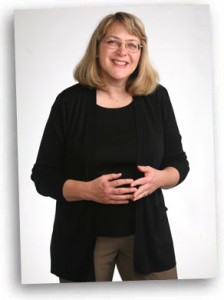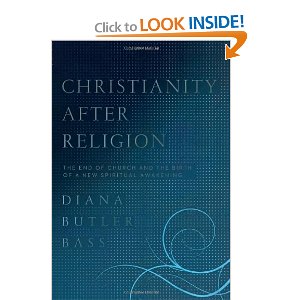Dancing with Diana ( Butler-Bass )
by Bill Dahl
Photography by Bill Dahl – All Rights Reserved
The following is an interview I completed with Diana Butler-Bass regarding her new book: Christianity After Religion– The End of Church and the Birth of a New Spiritual Awakening. My review of the book is here and on Amazon. In my view, her new book is both timely and prescient. It is convincing evidence defining Diana as a thought & practice leader in the faith & culture genre (if she wasn’t already).
About Diana Butler-Bass (excerpt below is from her site):
Diana Butler Bass is an author, speaker, and independent scholar specializing in American religion and culture. She holds a Ph.D. in religious studies from Duke University and is the author of eight books including Christianity After Religion: The End of Church and the Birth of a New Spiritual Awakening, NOW AVAILABLE from HarperOne (on Amazon). Her other books include A People’s History of Christianity: the Other Side of the Story (HarperOne, 2009), nominated for a Library of Virginia literary award and the best-selling Christianity for the Rest of Us (2006) which was named as one of the best religion books of the year by Publishers Weekly and was featured in a cover story in USA TODAY.
Currently a Chabraja Fellow with the SeaburyNEXT project at Seabury Western Theological Seminary, Diana regularly consults with religious organizations, leads conferences for religious leaders, and teaches and preaches in a variety of venues. She blogs at The Huffington Post and Patheos and regularly comments on religion, politics, and culture in the media including USA TODAY, Time, Newsweek, The Washington Post, CNN, FOX, PBS, and NPR. From 1995-2000, she wrote a weekly column on American religion for the New York Times Syndicate. She is a contributing editor for Sojourners Magazine has written widely in the religious press, including Christian Century, Clergy Journal, and Congregations.
From 2002 to 2006, she was the Project Director of a national Lilly Endowment funded study of mainline Protestant vitality—a project featured in Newsweek, U.S. News and World Report, the Washington Post and the Los Angeles Times. She is the recipient of numerous grants and awards including an honorary Doctor of Divinity degree from The General Theological Seminary in New York. Diana also serves on the boards of the Beatitudes Society and Public Religion Research.
Diana has taught at Westmont College, the University of California at Santa Barbara, Macalester College, Rhodes College, and the Virginia Theological Seminary. She has taught church history, American religious history, history of Christian thought, religion and politics, and congregational studies.
She and her family live in Alexandria, Virginia. She can be contacted through her website at www.dianabutlerbass.com and can be followed on Facebook and Twitter.
Here’s the interview with Diana: I call it, Dancing with Diana. Enjoy!
1. Dr. Ellen J. Langer of Harvard has written the following, which seemed to keep coming to mind as I read your book:
A mindful approach to any activity has three characteristics: the continuous creation of new categories; openness to new information; and an implicit awareness of more than one perspective. Mindlessness, in contrast, is characterized by an entrapment in old categories; by automatic behavior that precludes attending to new signals; and by action that operates from a single perspective. Being mindless, colloquially speaking, is like being on automatic pilot. (1)
Can you comment on the above as it relates to several of the arguments you share in Christianity After Religion – The End of the Church and The Birth of a New Spiritual Awakening?
I’ve not heard that distinction using the vocabulary of “mindfulness,” but I have used similar language about intentionality and being “reflexive.” All of these actions include creativity, reflection, engagement, and multi-perspectivalism as well as a willingness to move into unfamiliar territory. For Christianity to thrive in the 21st century, western Christianity must develop mindful, intentional and reflexive ways of being in community, acting out faith in the world, and living with conviction. A mindful Christian faith is the necessary opposite of received or inherited faith–and the world can no longer afford a sort of Christianity that rests solely of the patterns of the past. (emphasis is the Editor’s)
2. Neuroscientist Dr. Robert A. Burton has said in his book On Being Certain – Believing You Are Right Even When You’re Not: “We do not need and cannot afford the catastrophes born out of a belief in certainty.” He also says, “Certainty is not biologically possible. We must learn (and teach our children) to tolerate the unpleasantness of uncertainty.” (2)
How do these statements match up with what you have illuminated in Christianity After Religion – The End of the Church and The Birth of a New Spiritual Awakening?
In the new book, I talk about the necessity of experiential belief, what I also refer to as integrated belief. Belief that issues from experience and from human wholeness is almost in tension with ideological certainty. For life experience and the capacity to believe with our hearts always make room for the messiness of life and the exceptional cases. It is one thing, for example, to be certain that homosexuality is wrong; and it is a completely different thing to be the parent of a homosexual child. Being a good parent means mitigating certainty in favor of love. Belief is a necessary part of human life, every one believes many things. But belief that springs from experience and relationship is a healing sort of belief, rather than belief as intellectual certainty. We need to belief differently, not stop believing.
3. In Christianity After Religion – The End of the Church and The Birth of a New Spiritual Awakening you write:
“A new Light Form of faith, is led by those who wish to connect with people and ideas that are different, to explore the meaning of story and history, and to include as many as possible in God’s embrace.” – p.232.
What does this actually look like, practically speaking, using examples of such, that you’re aware of.
Although there are many such examples, one of the best is the Tri-Faith Initiative in Omaha, Nebraska. There, Jews, Christians, and Muslims have joined together and are building a synagogue, church, and mosque on a common piece of property, and all three sacred spaces will be joined by a common building for joint worship, education, and shared practices. They are building a sacred geography of connection with each other, exploring the meanings of their own stories and histories in relationship with the stories and histories of their neighbors. It is a big project, involving many thousands of people in Omaha, but it shows that we can think big in this Awakening. This isn’t just about micro-level connections, but together we really can create new macro-level structures that model and lead toward God’ dream of shalom.
4. Eugene Peterson has written:
“With God depersonalized and then repackaged as a principle or formula, people could shop at their convenience for whatever sounded or looked as if it would make their lives more interesting and satisfying on their own terms. Marketing research quickly developed to show us just what people wanted in terms of God and religion. As soon as we knew what it was, we gave it to them.” (3) p. 23
How does this statement match up with what you have written in Christianity After Religion – The End of the Church and The Birth of a New Spiritual Awakening?
There is line between being responsive to cultural change and the longings of human beings at any given moment in history, and turning those longings into a marketing strategy. All religions, indeed all forms of spirituality, relate intimately to new ideas about culture, science, human nature, and justice. None stand outside of the contours of human desire, even if that is desire for God. In that way, faith communities are always and must always adjust to different languages, tastes, song, ways of relating to one another, forms of leadership, practices of prayer. Yet, that must always be held in tension with the old quip of the 19th century Anglican Dean William Inge, “Whoever marries the spirit of this age will find himself a widower in the next.” To simply recreate faith on the basis of what is fashionable today is a mistake. But to sense, understand, and respond to the work of God’s spirit in and through the world in which we live–well, that is the primary vocation of Christians in every age.
5. George Barna has written regarding the spiritual transformation of Christians in the U.S.:
“the research indicates that only a handful of people make serious progress on the journey to wholeness.” (p.8) “Of all the adults who make a profession of faith in Christ – that is, they become “born again” – there is surprisingly little to show for the effort. On numerous occasions Jesus talked about the fact that you can tell Christians by the spiritual fruit they bear, but the data suggest that just one out of every ten adults who accept Jesus as their Savior make any substantial changes in their spiritual routines.” (4) pp.25-26.
What does this say about the success of religion in the U.S. – as evidenced in what you have written in Christianity After Religion – The End of the Church and The Birth of a New Spiritual Awakening?
I always find it interesting when George Barna and I agree–since we come from such different theological perspectives! Here, I mostly agree with him. Much of American religiosity can be thin, there’s a bad tendency, as there as with many religious traditions, among “born again” Christians to not practice what you preach. However, I’m actually glad that such a small percentage of those who Barna identifies as “born again” practice what they preach. Too much of “born again” religion in the United States is theologically narrow and politically right-wing. Should their spiritual routines involve excluding Jews and Muslims and Buddhists from civic engagement? Making women submit to their husbands? Recreating some sort of Christian America? Barna isn’t clear with his definitions of “born again,” or the sort of “spiritual routines” he thinks Christians should engage. Are those spiritual routines private or public? How do those people read the Bible? So, despite my general agreement with his assessment of shallowness of American religiosity, this statement makes me nervous as to what counts as being Christian. I’m more concerned with the vast numbers of Americans who say they believe in God yet continually support political policies that diminish the lives of their neighbors. That’s more important to me–and more important to America–than worrying about the fact that American evangelicals don’t change their spiritual practices.
6. David Kinnaman has written: “If outsiders stop listening, we cannot just turn up the volume.” (5)
If you agree, what do the new melody, lyrics, dancers and where we dance look like to you – as well as the impact this behavior may have on others and ourselves?
Ah! The Dance! One of the most beautiful mystical symbols for the reign of God! My teenage daughter would be mortified by the idea of her mom at a dance. My wonderful friend, Phyllis Tickle, has spoken of this age being not an age of orthodoxy or orthopraxy, of “right” belief or practice, but of ortho-nomy, that which she called “right” harmony, of the harmony of beauty being the fundamental test of human flourishing and truthfulness. I have meditated on that image for several years now, and I think that it is in harmonizing our voices, our loves, our experiences–and here I mean “our” as in the whole human family, not just Americans or Christians or people in a particular tradition–that we will find a path forward. But harmony does not eliminate voices that are dissonant. Indeed, those who cannot or refuse to harmonize sometimes make a music that the rest need to hear. It isn’t a matter of everyone in the world making harmony with the majority; it is often the case of the majority adjusting its music to the song of the marginalized.
As to the dance, it is most surely a circle dance, a communal one, not just the dance of individual partners. The days of the minuet are gone; these are the days of the dance around the campfire. (Editors Note: I love this characterization – don’t you?)
7. Diana, you’re a superb example of how a quality education can transform a person. The expense of higher education today is, unfortunately, precluding far too many from embracing this privilege. Do you have any thoughts on “new models” of higher education that readers might begin exploring? Also, how must seminary education change to maximize their contribution to “A New Spiritual Awakening?”
I’m still paying for that quality education myself! About two more years to go on what was an expensive but amazing adventure–one that created in me the disposition of a life of learning. I’m working with a number of groups trying to think about new models of higher education. At this point, there’s a lot of creative thinking, but not much has been put in practice. I think that much creativity is inhibited by what is still a hierarchical (and even patriarchal) model of expertise and leadership. When it comes to education, I always think that Parker Palmer‘s writings and his vision of circles of trust are a fantastic vision and resource–he has offered up in several of his books a model of integrated education. Seminary education possesses, in and of itself, the possibility of integration as theology must and should be based in and through an experience of God as understood by the heart. But, sadly, seminary education has too often mimicked secular expertise rather than the heart of wisdom upon which excellence theology is birthed. Right now, secular processes of accreditation and professionalism are holding the church back. What is really needed are theological learning communities, based in a mentor/friend/guild model, where people can engage in a range of practices from theological reflection to prayer to doing justice in the world. Seminary education, however, is a chicken-and-egg sort of thing. Seminaries can’t change until denominational policies do; denominational policies can’t change until seminaries nurture new vision; and nothing can change until grassroots churches demand change. And for churches to demand change, they must change themselves.
Thank you SO MUCH for such a tremendous book Diana!
You’re welcome! I’m so glad for your enthusiasm and support, Bill.
NOTES:
(1) Langer, Ellen J. The Power of Mindful Learning, DA CAPO Press – A member of the Perseus Books Group. Cambridge, MA Copyright © 1997 by Ellen Langer, Ph. D. p. 4.
(2) Burton, Robert A. M.D. On Being Certain – Believing You Are Right Even When You’re Not, St. Martins Press, New York, NY Copyright © 2008 by Robert A. Burton, M.D. pp.223-224.
(3) Peterson, Eugene H. Practice Resurrection – a conversation on growing up in Christ, William B. Eerdsman Publishing Company Grand Rapids, MI and Cambridge, U.K. Copyright © 2010 by Eugene H. Peterson. P. 23
(4) Barna, George Maximum Faith – Live Like Jesus, Metaformation, Inc. Ventura, CA & Strategenius Group, LLC New York, NY and WHC Publishing, Glendora, CA Copyright 2011 by George Barna.p. 23.
(5) UNchristan–What A New Generation Really Thinks About Christianity…And Why It Really Matters, by David Kinnaman & Gabe Lyons, Copyright © 2007 by David Kinnaman and Fermi Project. Published by Baker Books, a division of Baker Publishing Group, Grand Rapids, MI. p. 84.
All Rights Reserved. For Reprint Permission – please contact Bill Dahl at wsdahl(at)bendbroadband(dot)com. Links are fine without asking.






Thanks for this review/interview. The Burton quote alone made it a worthwhile read. I lived with, was raised by a man who was always right. I’m raising a daughter who also thinks she is. It’s perplexing and full of heartache on both counts.
Bill, Your reviews and interviews are “state of the art”–really tremendous. I am an author of several books and am working on my 41st re. the state and fate of the Christian ministry.
I’d love to talk to you and have you preview my current effort.
We live in Shasta County, CA about 2 hours south of Oregon.
May I have your email address, phone number, etc.?
Lowell Streiker